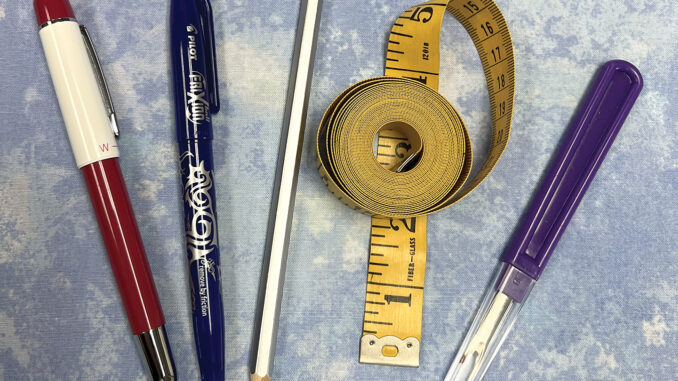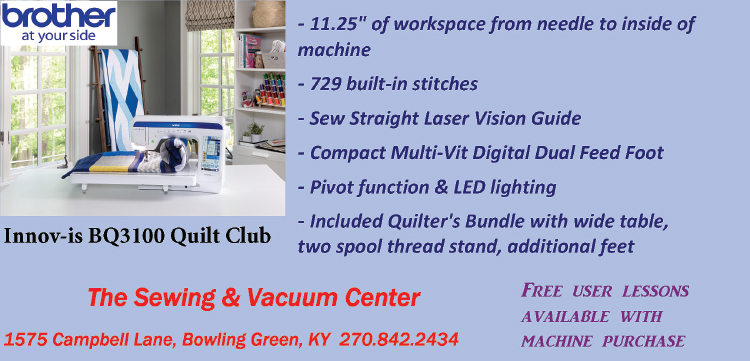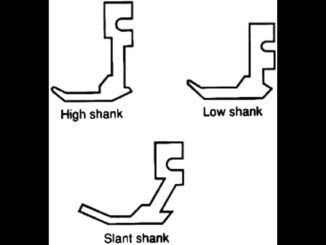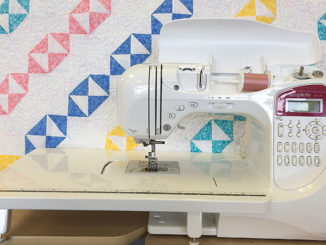
Back in the day, most homes had a sewing basket with supplies for stitching and mending. The basket would contain needles, thread, scissors, and a thimble. You might find some stray buttons, snaps or other fasteners for repairs. Today’s sewing basket contains the above items, but many new tools have been developed for the sewer to make projects easier. Here’s a look at today’s notions and their use that you may want to add to your notion stash.
My notions stash includes several types of straight pins beginning with Dressmaker pins. These are the ones most commonly used and work well for medium-weight fabrics as used in garment construction. I also like to use Quilting pins for my piecing. These pins are longer, about 1 3/8″, and have a colored ball on top. They are a bit stronger for pinning several layers of fabrics together during piecing. Glass head pins are also useful for items that need to be pressed while pinned. The glass heads will not melt. Flower head or flat head pins are other type that I keep for special use. These work well for pinning lace, and in some quilt projects, where the raised head might cause distortion during construction. Magic Pins is a brand that has developed the above types of pins with a silicone head that is easy to grip and, best of all, can be ironed over!
The pins will need a “home” to stay in when not in use. A pin cushion is the best way to keep the pins in place. If you use several different types of pins, use different pin cushions for storage – giving each type of pin its special place. The red tomato-shaped pin cushion is the most common, but many different types of designs are available. Making your own pincushions can be fun and allow for unique designs. A great filling to use is polyester fiberfill and/or finely crushed walnut shells. The shells can help to keep your pins sharp. Magnetic pin holders are also available. Be careful and do not leave your magnetic pin cushion too close to computerized machines as it may harm the internal working. Also remember: DO NOT sew over straight pins. Hitting a pin with your needle can break the needle, jam it into the bobbin area, and possibly throw the machine out of time.
A seam ripper (or designer adjuster, as I call it!) is a must for the sewing basket. This tool generally has a sharp, curved blade with a ball cap on the opposite blade (prevents slipping) that rips stitches out. If you are a machine embroiderer, there are specialty rippers available for removing the tight machine stitches produced by the embroidery machine.
The seam gauge is a 6″ metal ruler with a movable tab in the center. I keep a couple of these in my sewing area. The tab can be set at a particular measure for easy reference. This is used to mark hems, buttonholes, pleats, etc.
Another measuring tool that is helpful is the tape measure. The most common size is 60″ in length for general sewing. A quilting tape measure is 120″ in length which allows measuring baby- to king-size quilts. The tape measures are usually made of flexible fiberglass or cloth.
Marking tools are another important item for today’s sewing basket. There are many choices available, but my favorites are the disappearing ink (purple) pens, water soluble pens (blue), and chalk pencils. The pen marks will disappear as long as you do not iron them. Heat makes them permanent. The chalk pencils/markers come in a variety of colors and can be brushed off fabric. Another great marking pen is the Frixton gel pen. The pen marks will disappear when ironed but can return if the marked item cools to below freezing!
Thimbles may still be used by some for hand sewing projects. The thimble helps to push the needle through fabric layers, protecting your finger. Thimbles come in a variety of shapes and materials, from metal to leather. Metal thimbles are sized, so you will need to try one on for sizing. Leather thimbles are one-size and “mold” to your finger shape.
Collecting the above notions will help you start your sewing notions stash. We can help you assemble these tools or help you select a good sewing machine, which is the most important part of your sewing experience. We’re here to help you choose a machine that will fit your sewing needs, and we provide free lessons on using the machine. Come and see us!
-submitted by The Sewing & Vacuum Center




